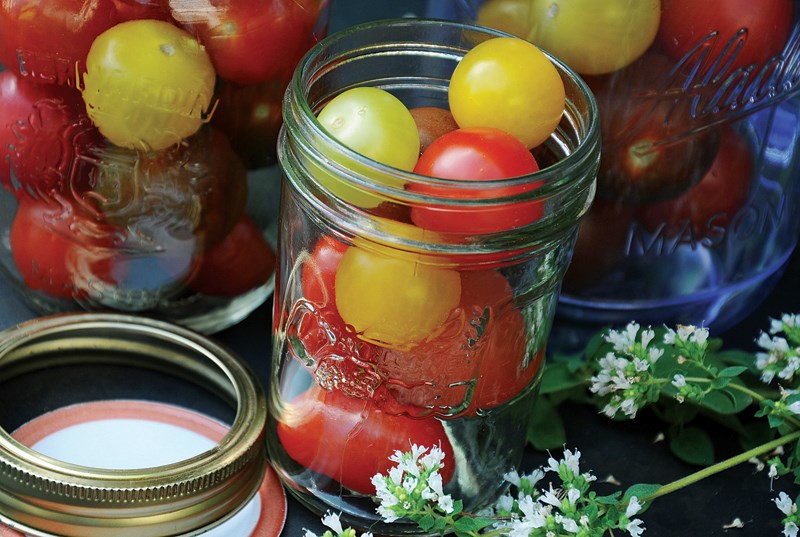It’s always this time of year that the abundance from the garden seems to overwhelm me.
Right now I have 50 pounds of tomatoes waiting to be canned, 20 lb. of beans ready for pickling and 30 lb. of beets for borscht headed for the freezer.
Most veggies can be quickly blanched, bagged, and then put straight into the freezer. My mom likes to put whole tomatoes into a bag in the freezer, and then defrost them in a big pot on the stove for sauce or soup on a winter day. The skins just slip off as they warm.
I love canning. I get a kick out of the whole steamy process, and the satisfaction of many rows of colourful glass jars on display at the end of the season.
However, it is not for everyone! If you’re doing large batches it can take all day or at least half a day, and there are a number of important safety procedures to learn and follow to ensure your finished product is safe to eat. Processing (freezing, drying, canning or pickling) is one way of dealing with all that you’re harvesting, but sometimes it can be overwhelming to find the time.
How else can we store our harvest? In the ground is a great option here on the West Coast. Our winters are mild enough that most root vegetables can be kept in the ground throughout the winter. In fact carrots actually taste better and sweeter after the first frost because the sugars in the green tops are forced back down into the root. Your beets can also withstand some frost while still in the ground, but not a hard freeze. If you opt to leave your root veggies in the ground then mulch them heavily with straw. The straw will help insulate and protect them all winter long.
You can mimic cool storage for root vegetables well enough in a garage or basement. There are many do-it-yourself tutorials online using buckets or rubber totes, and even a few options for apartment dwellers. When you harvest your roots for this type of storage cut off the green tops, but keep them dirty. Washing causes small lesions and breaks in the vegetables’ skins that will cause them to rot sooner than if left dirty.
Tomatoes can be stored on the vine in a closet or in your garage. This is a great trick if your vines still have many green tomatoes on them as the nighttime temperatures dip below 10 C. Cut the whole vine off near the ground, and hang it on a hook or clothes hanger. The leaves will send all their remaining nutrients to the fruit to aid in ripening, and the ethylene gas the tomatoes produce will also speed the process.
Back to the garden: This month is a great time to pinch your brussels sprouts. Pinch or cut off the leaves on the top of the centre stalk. This will encourage the plant to plump up the sprouts already forming.
I find that weeds always make a last big push at the end of the season, and seem to go to seed very quickly. Keep an eye on your weedy friends and try to get them out before they set seed. One plant going to seed can add tens of thousands of seeds to your soil. It will take a long time to get them out of your soil’s seed bank once they’re there.
Over the years I have gotten lots of questions about when to harvest winter squash, and I’ve seen too many harvested much too early. Pick a winter squash, like a butternut or spaghetti squash, too early and it will not taste very good or store well. Wait until the vines begin to die back, and pressing your thumbnail into the flesh will not puncture the skin. Once they’re ready to be harvested cut them off the stem leaving three inches of stem on the squash – don’t use this as a “handle.” Cure them by leaving them in a warm, sunny spot for about two weeks. Now they will store well for four to eight months depending on the variety.
Collect leaves. Collect leaves. Collect leaves. May this be your mantra heading into the fall season. Collect leaves for mulching your garden over the winter, and then collect more to store in bags or piles for your garden next year. As leaves decay they add wonderful nutrients and organic matter to your soil that really can’t be beat.
Happy gardening!
Emily Jubenvill grew up on the North Shore and is passionate about growing fresh organic food. She’s starting an organic farm, and working for the North Shore Neighbourhood House’s Edible Garden Project. [email protected] ediblegardenproject.com



